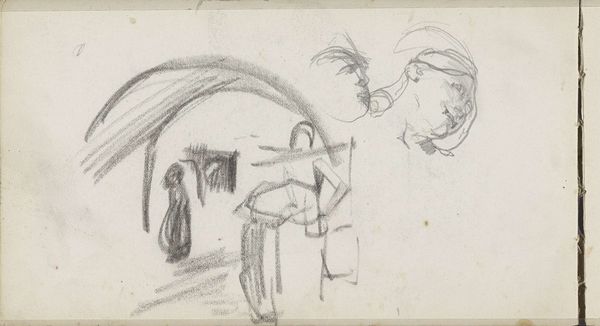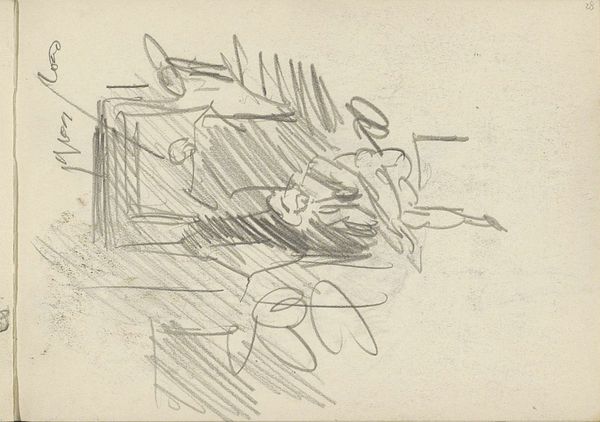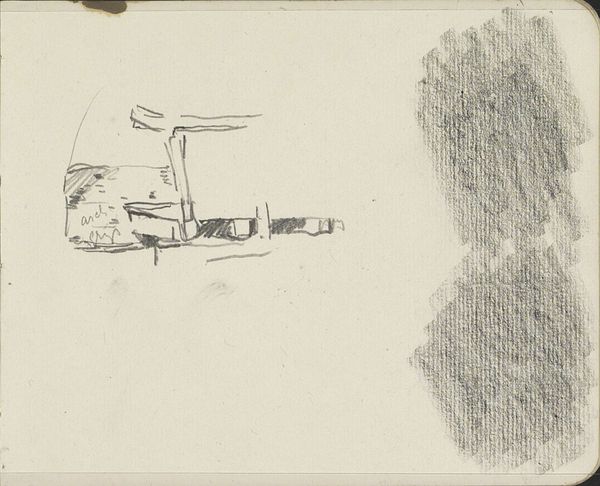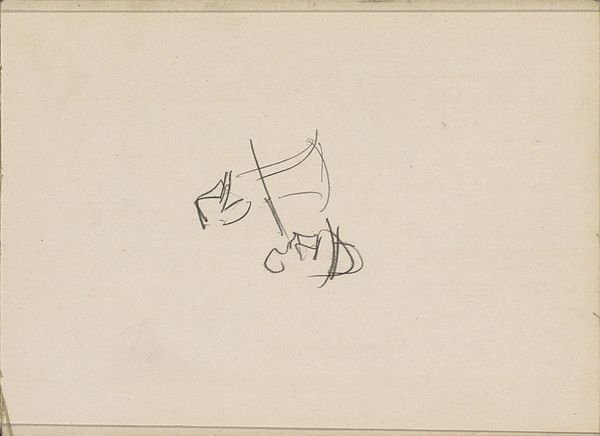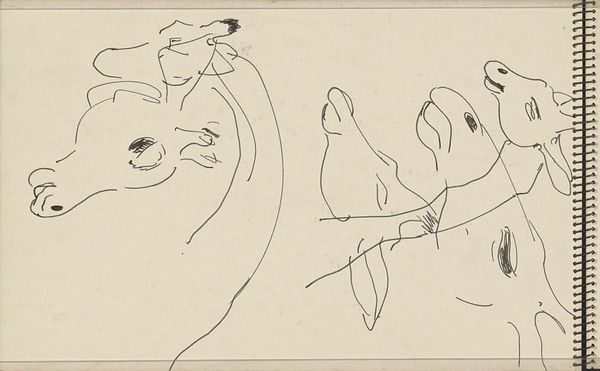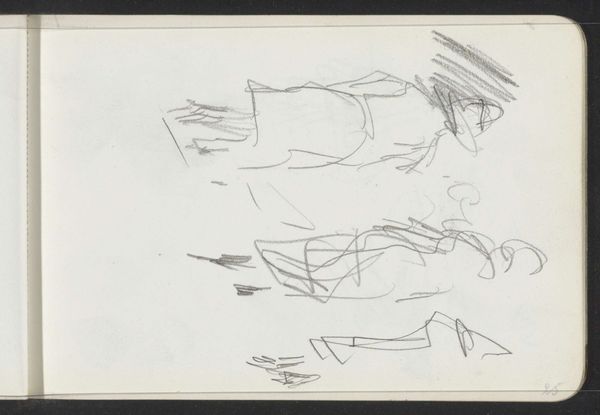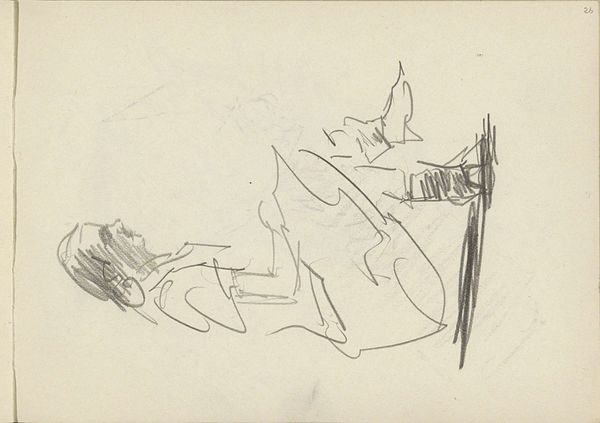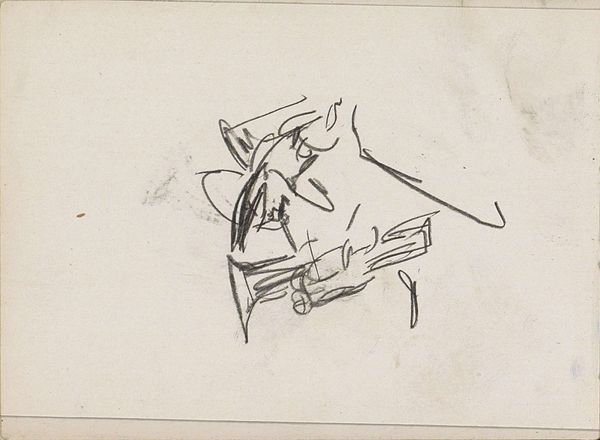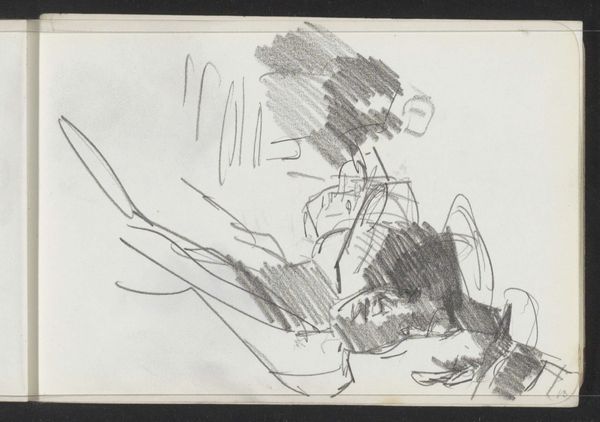
drawing, pencil
#
drawing
#
imaginative character sketch
#
light pencil work
#
cartoon sketch
#
figuration
#
personal sketchbook
#
idea generation sketch
#
ink drawing experimentation
#
pen-ink sketch
#
pencil
#
sketchbook drawing
#
sketchbook art
#
initial sketch
Copyright: Rijks Museum: Open Domain
Editor: This is "Konijnen," or "Rabbits," a pencil drawing by Carel Adolph Lion Cachet from 1896, currently held at the Rijksmuseum. The quick, loose lines give it a very spontaneous, almost playful feel. What can you tell us about it? Curator: The spontaneity is key. As a historian, I see this less as a finished piece and more as a glimpse into the artist's process. Consider the social and cultural context: the late 19th century saw a rise in interest in naturalism, but also a growing artistic desire to capture fleeting moments, internal states. This sketch embodies that perfectly. It feels immediate, like a page from a personal sketchbook, not intended for public consumption. Editor: So, its value lies in its informality? Curator: Precisely! Its power resides in offering a raw view of the artist's thought process. How the artist is grappling with the form of the rabbits. Cachet likely made this study to develop ideas for other projects. Consider the increasing professionalization of art. It is easy to imagine this work helping prepare for larger more formal projects for patronage. Does it evoke any feelings of seeing art in progress for you? Editor: I guess it’s fascinating to see this, it makes you think about what’s beneath the surface of those 'finished' works. Are there any social issues that might be subtly highlighted in his other work? Curator: Definitely worth further research. Sketches like this are invaluable for understanding the artist's intent and the historical currents influencing their practice. The role of animals was very pointed during that time, and so I encourage you to research how and why! Editor: That’s so interesting! I never thought about a sketch revealing so much about artistic intentions or socio-historical factors. It encourages further reflection! Curator: Indeed. It’s about shifting from seeing the artwork as merely a product to understanding it as a document, embedded in its specific time and place. It prompts one to keep digging.
Comments
No comments
Be the first to comment and join the conversation on the ultimate creative platform.


